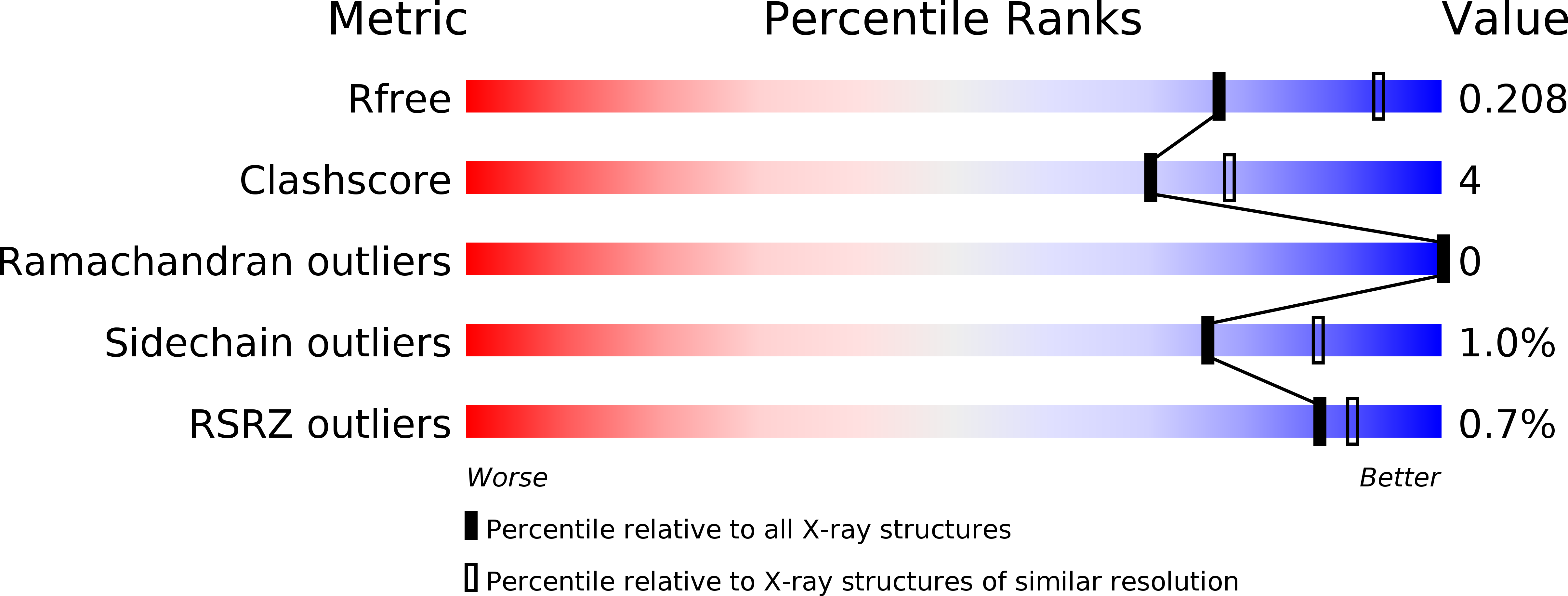Crystal structures of glycoside hydrolase family 3 beta-glucosidase 1 from Aspergillus aculeatus
Suzuki, K., Sumitani, J., Nam, Y.W., Nishimaki, T., Tani, S., Wakagi, T., Kawaguchi, T., Fushinobu, S.(2013) Biochem J 452: 211-221
- PubMed: 23537284
- DOI: https://doi.org/10.1042/BJ20130054
- Primary Citation of Related Structures:
4IIB, 4IIC, 4IID, 4IIE, 4IIF, 4IIG, 4IIH - PubMed Abstract:
GH3 (glycoside hydrolase family 3) BGLs (β-glucosidases) from filamentous fungi have been widely and commercially used for the supplementation of cellulases. AaBGL1 (Aspergillus aculeatus BGL1) belongs to the GH3 and shows high activity towards cellooligosaccharides up to high degree of polymerization. In the present study we determined the crystal structure of AaBGL1. In addition to the substrate-free structure, the structures of complexes with glucose and various inhibitors were determined. The structure of AaBGL1 is highly glycosylated with 88 monosaccharides (18 N-glycan chains) in the dimer. The largest N-glycan chain comprises ten monosaccharides and is one of the largest glycans ever observed in protein crystal structures. A prominent insertion region exists in a fibronectin type III domain, and this region extends to cover a wide surface area of the enzyme. The subsite +1 of AaBGL1 is highly hydrophobic. Three aromatic residues are present at subsite +1 and are located in short loop regions that are uniquely present in this enzyme. There is a long cleft extending from subsite +1, which appears to be suitable for binding long cellooligosaccharides. The crystal structures of AaBGL1 from the present study provide an important structural basis for the technical improvement of enzymatic cellulosic biomass conversion.
Organizational Affiliation:
Department of Biotechnology, The University of Tokyo, 1-1-1 Yayoi, Bunkyo-ku, Tokyo 113-8657, Japan.



























